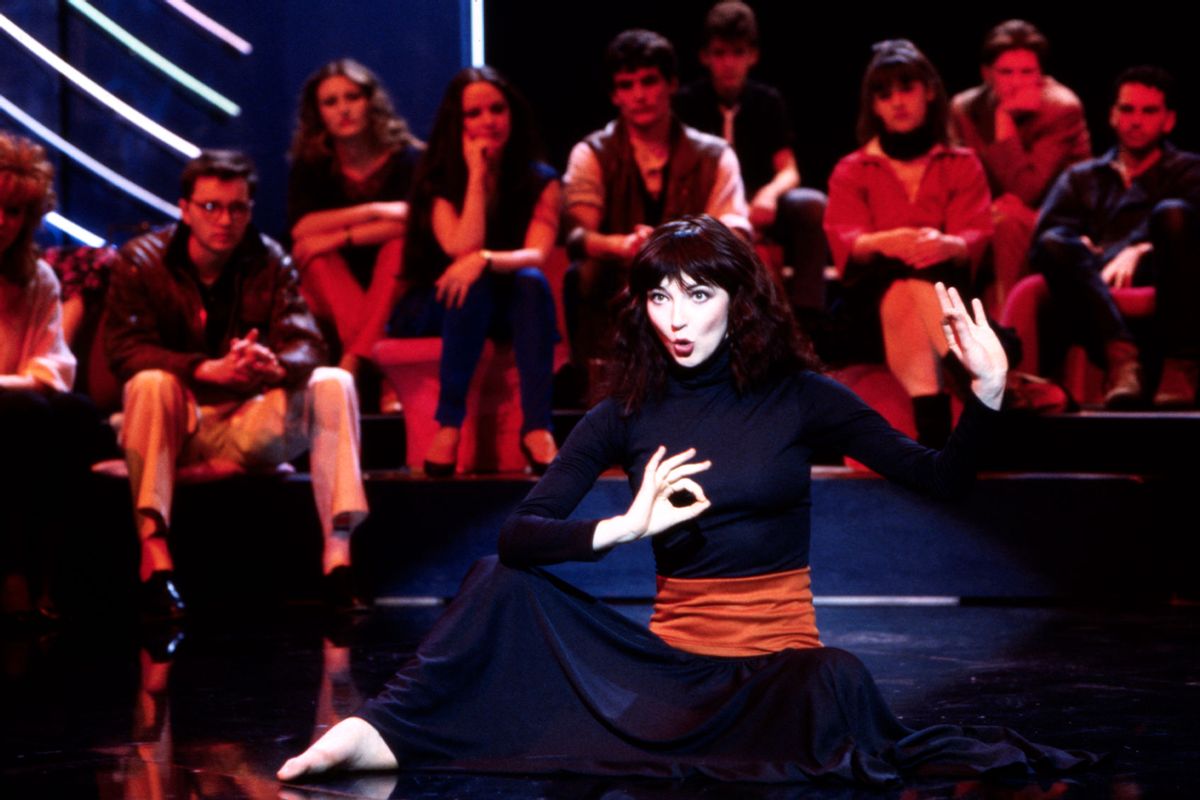Heading into the release of her fourth album, "The Dreaming," Kate Bush was in a comfortable place. Her previous full-length, 1980's "Never For Ever" had become her first chart-topping album in the UK. In fact, it was the first LP ever by a British female solo artist to reach No. 1. "Never For Ever" ultimately produced three Top 20 singles, including the indelible foible "Babooshka." In 1981, a standalone single called "Sat In Your Lap" had also been a success, reaching No. 11 on the charts.
The album is about giving yourself permission to be chaotic and imperfect.
But Bush was never content to duplicate herself or stay stagnant. When "The Dreaming" arrived in stores on September 13, 1982 — with a slightly different version of "Sat In Your Lap" right up front at track one — it was immediately apparent that she had entered a new and powerful phase of her career. The album is about giving yourself permission to be chaotic and imperfect, to stop suppressing messy thoughts and emotions. Rage, anguish, sadness, grief, alienation — "The Dreaming" lets them bubble up to the surface and boil over.
Always a caretaker of her creative work, Bush produced "The Dreaming" herself, a move that gave her the freedom to fulfill her intended vision. "I could actually do what I really wanted to for the first time," she said in 1985. "And there were a lot of things that we wanted to experiment with, and I particularly to play around with my voices because there are a lot of different backing vocals and things like that."
These additional vocals function as an inner monologue of sorts threading throughout the album. The voices in the background of "Pull Out the Pin" feel like hoarse primal screams, while what sound like banshee screams swirl through "Get Out Of My House" and the title track boasts a call-and-response format that resembles a group of warriors in battle. However, Bush also experiments with different lead vocal treatments, manipulating her voice into a distorted spirit form on "Leave It Open" and leaping between upper and lower ranges on "Sat In Your Lap."
"The different textures were important to me," she added in the same 1985 interview. "I wanted to try and create pictures with the sounds by using effects."
On "The Dreaming," her songs combined organic and digital approaches, creating delightful contrasts that reflected the changing musical times.
The songs on "The Dreaming" can feel like mini movies, with songs featuring bumbling robbers ("There Goes a Tenner"), a tortured relationship with a smuggler ("Night of the Swallow") and connecting with a loved one who's crossed into the great beyond ("Houdini"). But other songs tackle familiar topics as previous Bush albums — ghosts, death, despair — and serve as pointed critiques of humanity.
"Sat In Your Lap" is about "a search for knowledge," Bush told MTV in 1985. "And about the kind of people who really want to have knowledge but can't be bothered to do the things that they should in order to get it." That's a similar theme of "Suspended in Gaffa," as she relayed to NME in 1982: "It's about seeing something that you want — on any level — and not being able to get that thing unless you work hard and in the right way towards it. When I do that, I become aware of so many obstacles, and then I want the thing without the work."
Bush was and is always putting in the work. And on "The Dreaming," her songs combined organic and digital approaches, creating delightful contrasts that reflected the changing musical times. Opening track "Sat In Your Lap" featured then-Buggles member Geoff Downes contributing robotic horns via the Fairlight, while "Night of the Swallow" boasts Uilleann Pipes and a penny whistle. The solemn "All the Love" features a relatively straightforward guitar-bass-drums combo, while Bush's piano work throughout is full of verve and bounce — a jaunty waltz here, matching an oompah band there — but restrained where needed.
However, "The Dreaming" is distinctive due to Bush's embrace of technology. A cutting-edge digital synthesizer called the Fairlight CMI, which Bush had started experimenting with on "Never For Ever," became a dominant canvas. This translated to unique soundscapes that often feel lacquered but jarring, like jagged obsidian. Viscous rhythms lurch and splatter, creating herky-jerky grooves, and noise bursts splatter here and there. Perhaps the best example is "Get Out Of My House," which pairs clattering rhythms with discordant backup vocals, staccato piano, dark post-punk guitars and Bush's acrobatic, vibrato-heavy lead.
The combination of gothic antiquity and unsettled digital detours ensured "The Dreaming" was Bush's poorest-performing album to date. The LP debuted at No. 3 on the UK album charts but spent only 10 weeks there before falling out of the top 100. (In contrast, Bush's debut album, "The Kick Inside," spent 66 weeks on the chart across 1978 and 1979.) The album's lone official single, the title track, also only reached No. 48 on the singles charts.
Want a daily wrap-up of all the news and commentary Salon has to offer? Subscribe to our morning newsletter, Crash Course.
Bush bounced back, of course, as she returned in 1985 with the well-regarded "Hounds of Love," which has found new life in 2022 thanks to "Running Up That Hill." And "The Dreaming" has found its audience: The LP's genius is now recognized, including because it's an obvious touchstone for any number of artists; to name a few, Bjork, Tori Amos, Zola Jesus, and Tune-Yards. But "The Dreaming" is also important for what it represents: a visionary woman stretching herself musically and artistically, and laying the groundwork for even more stunning work in the future.



Shares